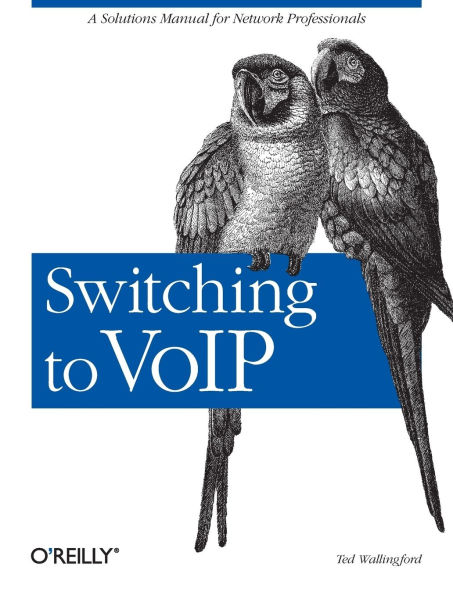
Switching to VoIP: A Solutions Manual for Network Professionals
502
Switching to VoIP: A Solutions Manual for Network Professionals
502Paperback
-
PICK UP IN STORECheck Availability at Nearby Stores
Available within 2 business hours
Related collections and offers
Overview
VoIP has advanced Internet-based telephony to a viable solution, piquing the interest of companies small and large. The primary reason for migrating to VoIP is cost, as it equalizes the costs of long distance calls, local calls, and e-mails to fractions of a penny per use. But the real enterprise turn-on is how VoIP empowers businesses to mold and customize telecom and datacom solutions using a single, cohesive networking platform. These business drivers are so compelling that legacy telephony is going the way of the dinosaur, yielding to Voice over IP as the dominant enterprise communications paradigm.
Developed from real-world experience by a senior developer, O'Reilly's Switching to VoIP provides solutions for the most common VoIP migration challenges. So if you're a network professional who is migrating from a traditional telephony system to a modern, feature-rich network, this book is a must-have. You'll discover the strengths and weaknesses of circuit-switched and packet-switched networks, how VoIP systems impact network infrastructure, as well as solutions for common challenges involved with IP voice migrations. Among the challenges discussed and projects presented:
- building a softPBX
- configuring IP phones
- ensuring quality of service
- scalability
- standards-compliance
- topological considerations
- coordinating a complete system 'switchover'
- migrating applications like voicemail and directory services
- retro-interfacing to traditional telephony
- supporting mobile users
- security and survivability
- dealing with the challenges of NAT
To help you grasp the core principles at work, Switching to VoIP uses a combination of strategy and hands-on "how-to" that introduce VoIP routers and media gateways, various makes of IP telephone equipment, legacy analog phones, IPTables and Linux firewalls, and the Asterisk open source PBX software by Digium. You'll learn how to build an IP-based or legacy-compatible phone system and voicemail system complete with e-mail integration while becoming familiar with VoIP protocols and devices. Switching to VoIP remains vendor-neutral and advocates standards, not brands. Some of the standards explored include:
- SIP
- H.323, SCCP, and IAX
- Voice codecs
- 802.3af
- Type of Service, IP precedence, DiffServ, and RSVP
- 802.1a/b/g WLAN
If VoIP has your attention, like so many others, then Switching to VoIP will help you build your own system, install it, and begin making calls. It's the only thing left between you and a modern telecom network.

Product Details
| ISBN-13: | 9780596008680 |
|---|---|
| Publisher: | O'Reilly Media, Incorporated |
| Publication date: | 06/11/2005 |
| Pages: | 502 |
| Product dimensions: | 7.00(w) x 9.19(h) x 1.10(d) |
About the Author
While working in the data center at ad agency J. Walter Thompson, Ted began to write articles for computer magazines. This led him into writing marketing materials for Gateway Computer and the former Amiga Inc., where he was also webmaster in 1999. As I.T. Director for a large, private construction firm, Ted transformed a single-operator midrange computer room into a mission-critical 24x7 data center hosting services for lines of business across the country. Ted has designed and implemented Voice over IP on networks large and small. He offers network design for VoIP systems and product management assistance for up'n'coming VoIP carriers through his macVoIP.com consulting practice. Ted believes that VoIP and the Internet are today's revolution in distance communication.
Aside from technology and writing, Ted has served as a member of the board of trustees for an international adoption agency in suburban Cleveland, where he lives with his wife and two children. Ted is currently working on Switching to VoIP for O'Reilly Media.
